- Home
- Devdutt Pattanaik
Brahma Page 2
Brahma Read online
Page 2
Some images are svayambhu, naturally potent, hence attract throngs of devotees. They need few, if any, aura-replenishing rituals. Balaji, the deity who resides atop the hills of Tirumala, Andhra Pradesh, is said to be so sensitive to people’s needs that even though his eyes are covered with sandal paste he is able to respond to the needs of over a hundred thousand pilgrims who visit his temple every day.
As devotees leave a shrine, they try to carry with them anything that has come in contact with the deity: dry flakes of sandal paste, ash, water, flowers, cloth or food. This is prasad. It contains divine aura by coming in contact with God. It has the power to carry divine blessings wherever it goes. The principle underlying this practice is called ‘contagious magic’, the ability to transmit sacredness through contact.
Many temples claim that the images they enshrine are not carved by human hands. They are said to have been found in a termite hill by cowherds who found their cows shedding milk over it. Such tales transform the images into svayambhu svarupas, self-created images of a very conscious God, who wants to be found.
A deity may be worshipped in a temporary open-air shrine made of bamboo, cane and cloth that is dismantled after the ceremony. Or it may be placed in a permanent shrine: inside the house, restricted to the family, or in a public space, open to the community. A Hindu temple is not a prayer hall or the space where the faithful gather; it is the residence of God. Each day the presiding deity is bathed, fed, bedecked and adored. Each day the deity grants audience to devotees, accepting their offerings and answering their prayers.
This rather fierce-looking head with tongue sticking out often adorns doorways and arches of temples. Its irreverent, mocking expression contrasts with the serenity of the presiding deity. It reminds everyone that God can see beyond the piety being expressed. The unspoken truths in the hearts of the devotees are not hidden from God.
For Hindus, the temple is as important as the deity within. The deity gives meaning to the temple; if the deity did not exist, the devotees would not go to the temple. If the temple did not exist, if there were no magnificent archways, embellished walls, decorated roofs or fluttering flags, devotees would not know where to look for the deity. Thus the temple and the deity within validate each other. The temple is the body and the deity, its soul.
Hindu temple walls are covered with all kinds of images, both real and imagined. There are scenes from everyday life: priests performing yagna, kings fighting battles, warriors hunting, courtesans dancing, couples making love, children playing and sages giving discourse. Then there are fantastic forms: gods with multiple heads, goddesses with many arms, demons with fangs, mythical beasts—part serpent, part lion, part elephant. The sacred and the profane, the sexual and the violent, the factual and the fictional, the desired and the disgusting merge and mingle with each other. Hindu temple art informs the viewer that everything can and does exist in the world. There can be no limits to God. Hence Brahmanda is boundless, the possibilities within endless. Hindu temples are thus architectural expressions of the Hindu understanding of the world.
Narasimha is a form of Vishnu that is neither man nor animal. It is neither this nor that. For many, this is a monster because it cannot be classified. For the devotee, this is God, because it defies classification. Images such as these which emerge from beyond the limits of human vision and vocabulary embellish Hindu temple walls. They remind all that what is impossible in human reason is possible in divine thought.
In the earliest phase of Hinduism, known as the Vedic age, there were no temples. The need for permanent shrines came much later when the nomadic lifestyle gave way to a more settled agricultural life. Temple or no temple, the aim of invoking the divine in all phases of Hinduism has been the same: to cope with the stress of existence. The response took, and continues to take, three forms:
Fight: rites and rituals aimed at changing circumstances in one’s favour
Flight: monastic ideologies that sought an alternative, less tumultuous reality
Freeze: submission to a higher power who then guides one’s destiny
The ritual known as yagna was the cornerstone of religious activity in Vedic times. Priests, on behalf of a patron, sat around a fire altar, chanted hymns and made offerings of milk and butter into the flames, invoking celestial beings known as Devas and compelling them by the power of ritual to satisfy the material aspirations of the patron. Pleased with the chants and offerings, the Devas gave victory in battle, brought rains on time and gave children to the childless.
Dasharatha’s Sons
Dasharatha had three wives but no sons. So he invited Rishi Rishyashringamuni to perform a yagna. At the end of the yagna, a Deva appeared from the flames and gave Dasharatha a pot of sweet porridge. ‘Give it to your wife and she will bear a son,’ said the Deva. Dasharatha gave half the porridge to his senior queen, Kaushalya, and half to his favourite queen, Kaikeyi. Both queens gave half of their share to the youngest queen, Sumitra. As a result Kaushalya gave birth to Rama, Kaikeyi to Bharata and Sumitra to the twins Lakshmana and Shatrughna. Rama and Lakshmana were inseparable, as were Bharata and Shatrughna. (Ramayana)
Vedic gods resided above the earth. There was Agni, fire, who stood on the ground. There was Vayu, wind, who extended between earth and sky. There was Indra, who ruled the sky and brought rain by attacking monsoon clouds with his thunderbolt. Then came Surya, the sun, Chandra, the moon, and seven other celestial bodies or Grahas whose movements across the twelve solar houses and twenty-seven lunar houses aroused great curiosity. Not only did they indicate the change of seasons, they also mapped out the destiny of man. It was in Vedic times that Jyotisha-shastra or astrology came into being. It enabled man to distinguish favourable times from unfavourable times. It foretold future calamities and provided the means to realize dreams or modify destiny using the power of gemstones and rituals that realigned the power of the Grahas.
Like all celestial bodies, Chandra, the moon-god, travels through the twelve solar houses, the Rashis, and the twenty-seven lunar houses, the Nakshatras. The Nakshatras are said to be the wives of the moon. His favourite Nakshatra is Rohini. He waxes as he moves towards her and wanes as he moves away from her. On the twenty-eighth day, when there is no wife next to Chandra, the sky is dark, with no trace of the moon. On this day the moon sits on Shiva’s head. The story goes that he was so handsome that Tara, the star-goddess, wife of Brihaspati, Jupiter, eloped with him. The child thus conceived was Budh, Mercury. Indra, king of the sky, decreed though the child was fathered by the moon its legitimate father was Brihaspati.
The list of astrological deities includes not only Devas but also Rishis (Brihaspati and Shukra) and Asuras (Rahu and Ketu). Rishis were keepers of Vedic lore and, in Vedic times, those who possessed a deep understanding of this highly revered scripture were considered as powerful as the gods. Asuras were enemies of the Devas; they resided under the earth. Though Asuras, Rahu and Ketu were special. They lived in the skies as eclipses and comets influencing the design of the celestial regions and hence influencing the destiny of those on earth. Rahu and Ketu therefore became worthy of worship, to be appeased rather than adored. The following story explains how Rahu and Ketu came to sit alongside the gods.
Rahu and Ketu
Once the Adityas and Daityas, sons of Aditi and Diti by the sage Kashyapa, were fighting over a pot of Amrita, the nectar of immortality. Vishnu, who is God, took the enchanting female form of Mohini and offered to distribute it between them. Smitten by her beauty, both sets of half-brothers accepted the offer. Distracting the Daityas with her alluring smile, Mohini poured Amrita down the throats of the Adityas. One Daitya got suspicious. He went and sat among the Adityas. As the Amrita fell into his mouth, the sun and the moon recognized the intruder. They alerted Vishnu, who immediately hurled his discus and severed the Daitya’s neck. The head became the demon Rahu, who swore to eclipse the sun and the moon from time to time. The body became the demon Ketu, a directionless comet. Since the Daityas did not get
a drop of Amrita, they became known as Asuras, those who did not drink the divine nectar. The Adityas became known as Suras, those who did drink the divine nectar. The Suras were Devas, or gods of light, illuminated by Amrita. (Mahabharata)
Rahu is represented as having a serpent’s head while Ketu has a serpent’s tail. Nagas or hooded serpents have a close relationship with Asuras. Both live under the earth. Both crave for Amrita that the Devas jealously guard. Both are associated with the idea of renewal. Deprived of Amrita, the Asuras take the help of Shukra, Venus, their guru, who has knowledge of Sanjivani Vidya, which allows him to resurrect dead Asuras. Nagas possess the power to regenerate themselves, replace their old skin with new ones because they had slithered on the grass where the pot of Amrita was once kept. This ability to be reborn, renewed and resurrected has made the Asuras and Nagas earth-bound deities. They are associated with fertility rites, and invoked for children and harvest.
Serpents are symbols of change and renewal. Like the earth they renew their fertility by replacing old skin with new. Since they could slither above and below the earth, they were considered keepers of the earth’s secrets and hence symbols of occult lore. Serpents reminded Rishis of rivers meandering through the plains. They become symbols of life and time that keeps moving in one direction. Hindu deities are commonly associated with serpents. Shiva, the ascetic form of God, lets a serpent sit on him, while Vishnu, the royal form of God, sits on top of a serpent. This is because Shiva merely witnesses the earth’s fertile rhythms while Vishnu controls it to establish society. The Goddess holds the serpent in her hand. She is the serpent—the earth, the river, time and life—that Shiva and Vishnu respond to.
Glossary of Non-English Words
ananda bliss, tranquillity, serenity
Apsara water-nymph, celestial dancer
ashrama stage in life
Asura subterranean being who hoards wealth
atma soul
avatar incarnation
bhakti passionate devotion
bhoga sensory indulgence
chitta consciousness, spirit, mind
daan charity
dakshina service fee
Deva celestial being who draws and distributes wealth
devata personal deity
dharma order, regulations
Gandharva celestial musicians
jiva living organism
jiva-atma soul of a living organism that is crumpled/knotted
kalpa lifetime of the world
kama desire
karma action and reaction
manas mind
Manava human
mantra potent Vedic chants
marga path or approach
maya delusion; a limited, conditional understanding of the world
mithya relative truth seen through a frame of reference
moksha liberation
murti image
nivritti inward
param-atma soul of god that is uncrumpled/unknotted
Prakriti ever-changing aspect of life, mind and matter
pravritti outward
puja adoration or worship of a deity with flowers, incense and food
Purusha unchanging aspect of life, soul
Rakshasa wild forest spirit who follows the law of the jungle
rasa material fluids
Rishi sage with a deep understanding of Vedic lore
samadhi using spiritual powers to break free from the world
samaja society
samhita collection of chants
samsara the material world that changes constantly
samskara rite of passage
sat absolute truth without a frame of reference
shakti energy, matter
shanti peace
sharira body
siddhi the act of using spiritual powers to change the working of the world
Tantra occult practices based on Vedic understanding of the world
tapa spiritual fire
Tapasvin an ascetic who churns spiritual fire
tapasya practices that churn spiritual fire
tat tvam asi that’s what you are
tirtha pilgrimage to a waterbody: river or lake or tank
Upanishad deliberations and discussions on the Veda
varna station in society
Veda ancient revelations containing timeless truths
yagna invocation of celestial beings through chants and offerings
Yaksha wild forest spirit who guards treasures
yantra potent Tantrik diagrams
yatra journey
yoga sensory discipline
Yogi he who practises yoga
yuga an era in the lifetime of the world
Bibliography
Abbot, J.E. and N.R. Godbole. Stories of Indian Saints. Delhi: Motilal Banarsidass, 1996.
Bhattacharji, Sukumari. The Indian Theogony. New Delhi: Penguin Books, 2000.
Coupe, Lawrence. Myth. London: Routledge, 1997.
Dange, Sadashiv Ambadas. Encyclopaedia of Puranic Beliefs and Practices, Vols 1–5. New Delhi: Navrang, 1990.
Danielou, Alain. Gods of Love and Ecstasy: The Traditions of Shiva and Dionysus. Rochester, Vt.: Inner Traditions International, 1992.
Danielou, Alain. Hindu Polytheism. Rochester, Vt.: Inner Traditions International, 1991.
Eliade, Mircea. Myths, Dreams, and Mysteries. London: Collins, 1974.
Flood, Gavin. An Introduction to Hinduism. New Delhi: Cambridge University Press, 1998.
Frawley, David. From the River of Heaven. Delhi: Motilal Banarsidass, 1992.
Graves, Robert. The Greek Myths. London: Penguin Books, 1960.
Hawley, J.S. and D.M. Wulff, eds. The Divine Consort. Boston: Beacon Press, 1982.
Highwater, Jamake. Myth and Sexuality. New York: Meridian, 1990.
Hiltebeitel, Alf, ed. Criminal Gods and Demon Devotees. New York: State University of New York Press, 1989.
Hiltebeitel, Alf. Cult of Draupadi, Vol. 1. Chicago: University of Chicago Press, 1988.
Hopkins, E. Washburn. Epic Mythology. Delhi: Motilal Banarsidass, 1986.
Jakimowicz-Shah, Marta. Metamorphosis of Indian Gods. Calcutta: Seagull Books, 1988.
Jayakar, Pupul. The Earth Mother. Delhi: Penguin Books, 1989.
Jordan, Michael. Myths of the World. London: Cambridge University Press, 1993.
Kinsley, David. Hindu Goddesses. Delhi: Motilal Banarsidass, 1987.
Klostermaier, Klaus K. Hinduism: A Short History. Oxford: Oneworld Publications, 2000.
Knappert, Jan. An Encyclopedia of Myth and Legend: Indian Mythology. New Delhi: HarperCollins, 1992.
Kosambi, Damodar Dharmanand. Myth and Reality. Mumbai: Popular Prakashan Pvt. Ltd, 1994.
Kramrisch, Stella. The Presence of Shiva. New Delhi: Motilal Banarsidass, 1988.
Mani, Vettam. Puranic Encyclopaedia. Delhi: Motilal Banarsidass, 1996.
Martin-Dubost, Paul. Ganesha: Enchanter of the Three Worlds. Mumbai: Franco-Indian Research, 1997.
Mazumdar, Subash. Who Is Who in the Mahabharata. Mumbai: Bharatiya Vidya Bhavan, 1988.
Meyer, Johann Jakob. Sexual Life in Ancient India. Delhi: Motilal Banarsidass, 1989.
O’Flaherty, Wendy Doniger, trans. The Rig Veda: An Anthology. New Delhi: Penguin Books, 1994.
O’Flaherty, Wendy Doniger, trans. Origins of Evil in Hindu Mythology. New Delhi: Motilal Banarsidass, 1988.
O’Flaherty, Wendy Doniger, trans. Hindu Myths. Delhi: Penguin Books, 1975.
O’Flaherty, Wendy Doniger. Sexual Metaphors and Animal Symbols in Indian Mythology. New Delhi: Motilal Banarsidass, 1981.
O’Flaherty, Wendy Doniger. Siva: The Erotic Ascetic. London: Oxford University Press Paperbacks, 1981.
Panati, Charles. Sacred Origins of Profound Things. New York: Arkana, 1996.
Pandey, Rajbali. Hindu Samskaras. Delhi: Motilal Banarsidass, 1969.
Pattanaik, Devdutt. Indian Mythology: Tales, Symbols and Rituals from the Heart of the Indi
an Subcontinent. Rochester, Vt.: Inner Traditions International, 2003.
Pattanaik, Devdutt. Lakshmi, Goddess of Wealth and Fortune: An Introduction. Mumbai: Vakil, Feffer and Simons, 2003.
Pattanaik, Devdutt. Hanuman: An Introduction. Mumbai: Vakil, Feffer and Simons, 2001.
Pattanaik, Devdutt. Man Who Was a Woman and Other Queer Tales from Hindu Lore. New York: Harrington Park Press, 2001.
Pattanaik, Devdutt. Devi: An Introduction. Mumbai: Vakil, Feffer and Simons, 2000.
Pattanaik, Devdutt. Goddess in India: Five Faces of the Eternal Feminine. Rochester, Vt.: Inner Traditions International, 2000.
Pattanaik, Devdutt. Vishnu: An Introduction. Mumbai: Vakil, Feffer and Simons, 1999.
Pattanaik, Devdutt. Shiva: An Introduction. Mumbai: Vakil, Feffer and Simons, 1997.
Sen, Makhan Lal. The Ramayana of Valmiki. Delhi: Munshiram Manoharlal, 1978.
Subramaniam, Kamala. Srimad Bhagavatam. Mumbai: Bharatiya Vidya Bhavan, 1987.
Walker, Benjamin. Hindu World, Vols 1 and 2. Delhi: Munshiram Manoharlal, 1983.
Wilkins, W.J. Hindu Mythology. Delhi: Rupa, 1997.
Zimmer, Heinrich. Myths and Symbols in Indian Art and Civilization. Delhi: Motilal Banarsidass, 1990.
THE BEGINNING
Let the conversation begin…
Follow the Penguin Twitter.com@penguinbooks
Keep up-to-date with all our stories YouTube.com/penguinbooks
Pin ‘Penguin Books’ to your Pinterest
Like ‘Penguin Books’ on Facebook.com/penguinbooks
Find out more about the author and
discover more stories like this at Penguin.co.uk
PENGUIN BOOKS
UK | Canada | Ireland | Australia
New Zealand | India | South Africa

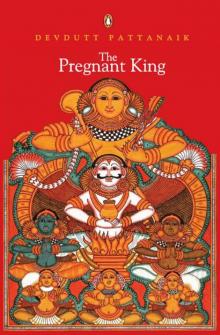 Pregnant King
Pregnant King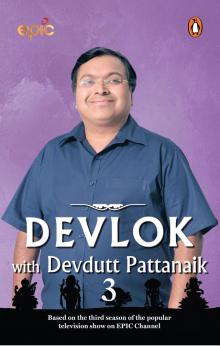 Devlok With Devdutt Pattanaik: 3
Devlok With Devdutt Pattanaik: 3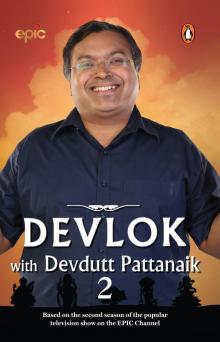 Devlok With Devdutt Pattanaik
Devlok With Devdutt Pattanaik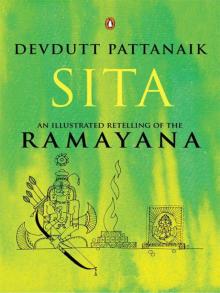 Sita: An Illustrated Retelling of the Ramayana
Sita: An Illustrated Retelling of the Ramayana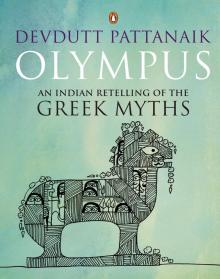 Olympus
Olympus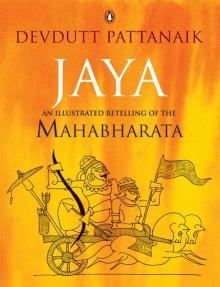 Jaya: An Illustrated Retelling of the Mahabharata
Jaya: An Illustrated Retelling of the Mahabharata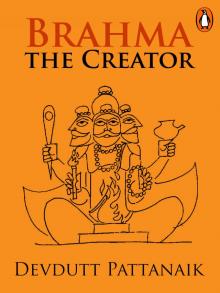 Brahma
Brahma